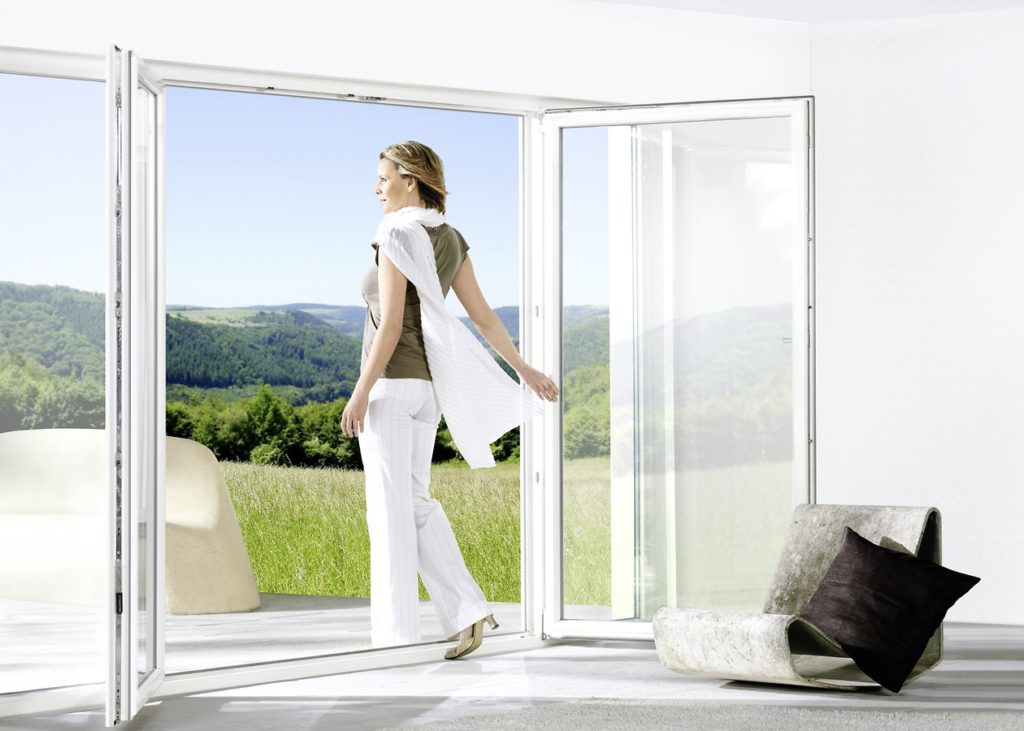French glass doors are the perfect way to add light and beautiful views in your home, while also gaining additional access to the outdoors. They’re the perfect accent for a back or side exit that leads out to a patio, porch, garden or other eye-catching outdoor space.
But converting a window to a French glass door doesn’t come without its price. It means extending your window’s existing rough openings, which is considered serious demolition. Your contractor will have to cut into your wall’s sheet rock and the home’s siding—and they may even need to rewire or install support beams, depending on where the window is located. That doesn’t mean it’s not well within reach for most homeowners, just that there a couple of factors to consider. Here’s what influences the final total.

French Door Considerations
Wood Type
Because French doors are renowned for their elegance and beauty, most manufacturers avoid cutting corners by offering solid wood construction. Common wood species used for French door building include mahogany, fir, walnut, and oak.
Other, less-expensive materials are available, though, such as metal, fiberglass and vinyl-laminated wood. Most are made to simulate real wood, and they tend to have a longer lifespan and require less upkeep than their wood counterparts.
Exterior French Doors
Many people assume that a door made primarily of glass is limited to interior applications only, but this isn’t the case with French doors. The invention of laminates and safety glass has increased their popularity as entry doors in recent years. Exterior French doors also come with espagnolettes (vertical deadbolts) for added security. Made from tempered steel, these bolts penetrate the floor and head jamb – often by several inches – to strengthen the door.
Interior French Doors
French doors, while they’re becoming more popular for exterior uses, are still primarily used on the inside of homes. Double French doors are often found as entryways to formal dining rooms, studies, libraries, and game rooms, where a wide doorway adds a stately dimension. Of course, they can be used anywhere in the home, and several door designs, as well as different-colored glass, are available to provide the appropriate aesthetic.
French doors are also sold in a variety of sizes. Expect local stores to have widths of 30″, 32″, and 36″. For double door installations these widths double to 60″, 64″, and 72″ (6 feet). French door heights are typically 6′ 8″, (80″) and 6′ 11″ (83″). Most door manufacturers additionally offer custom sizes to accommodate specific project needs.
French Door Costs
Please note that the prices below are for a typical 6′ 8″ tall by 5 foot wide double French door.
- A typicalfiberglass French door costs $1,100 to $1,500 installed.
- Interior wood French doors cost $700 to $1,000 installed.
- An exterior wood French door might cost anywhere from $1,200 to $3,000 installed. On the higher end of the price spectrum are woods such as mahogany, cedar and oak.
- Vinyl-capped wood French doors cost $1,000 to $1,400 installed
- Expect a typical single French door to cost $300 to $700, although you could pay up to $1,500 for a high quality solid wood door.

Screening French doors
Phantom’s retractable screens offer an easy and effective way to screen French doors. Because French doors are operated as either swing-in or swing-out, Phantom’s screens do not interfere with their functionality. They can be installed on the inside or the outside of your doors, allowing for increased privacy, bug protection and shade. A screen is mounted on both the left hand and right hand side of the opening and the screens pull together in the middle. Either side can be opened independently of each other giving you versatility when you’re walking through the opening. Different colors and styles of mesh are available for your screens, allowing them to blend effortlessly into the decor of your home. Both stylish and functional, Phantom’s Legacy or Professional retractable screens let the sunlight in on warm summer days, but also ensure that your home is receiving proper ventilation. Whether you want to enjoy the outdoors from inside or open your doors to feel the breeze, Phantom’s product is a great option for screening.
Adding privacy
Standalone French doors don’t offer much in the way of privacy, so you may want to add blinds or curtains to your doors to keep peering eyes out. If blinds and curtains aren’t your style, consider using a product called window film. You’ll have to measure your space so that a piece of film can be cut and placed on your door. It comes in a variety of styles, including stained glass and frosted windows. A great thing about window film is that it does not add bulk to your doors, leaving them with a more natural look.